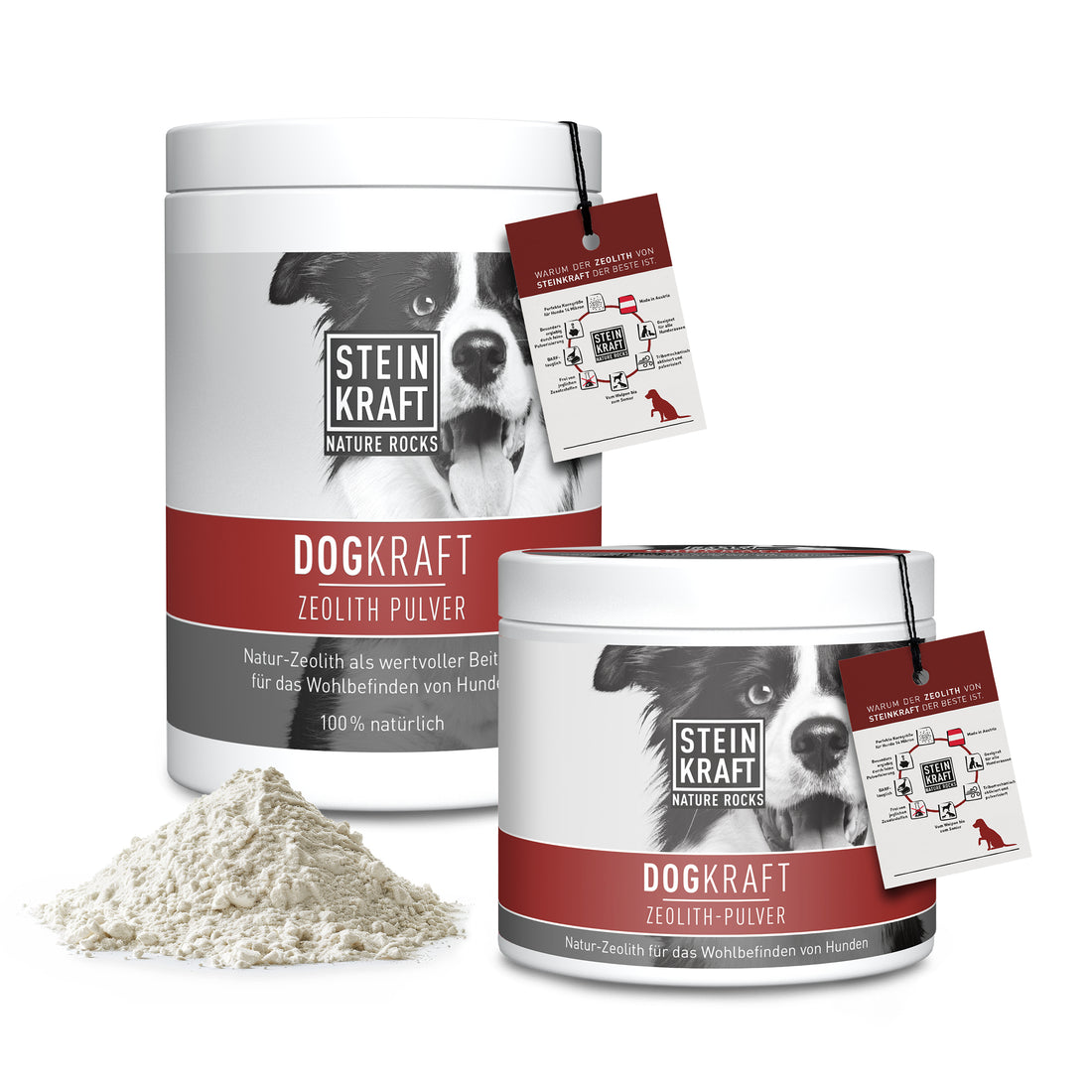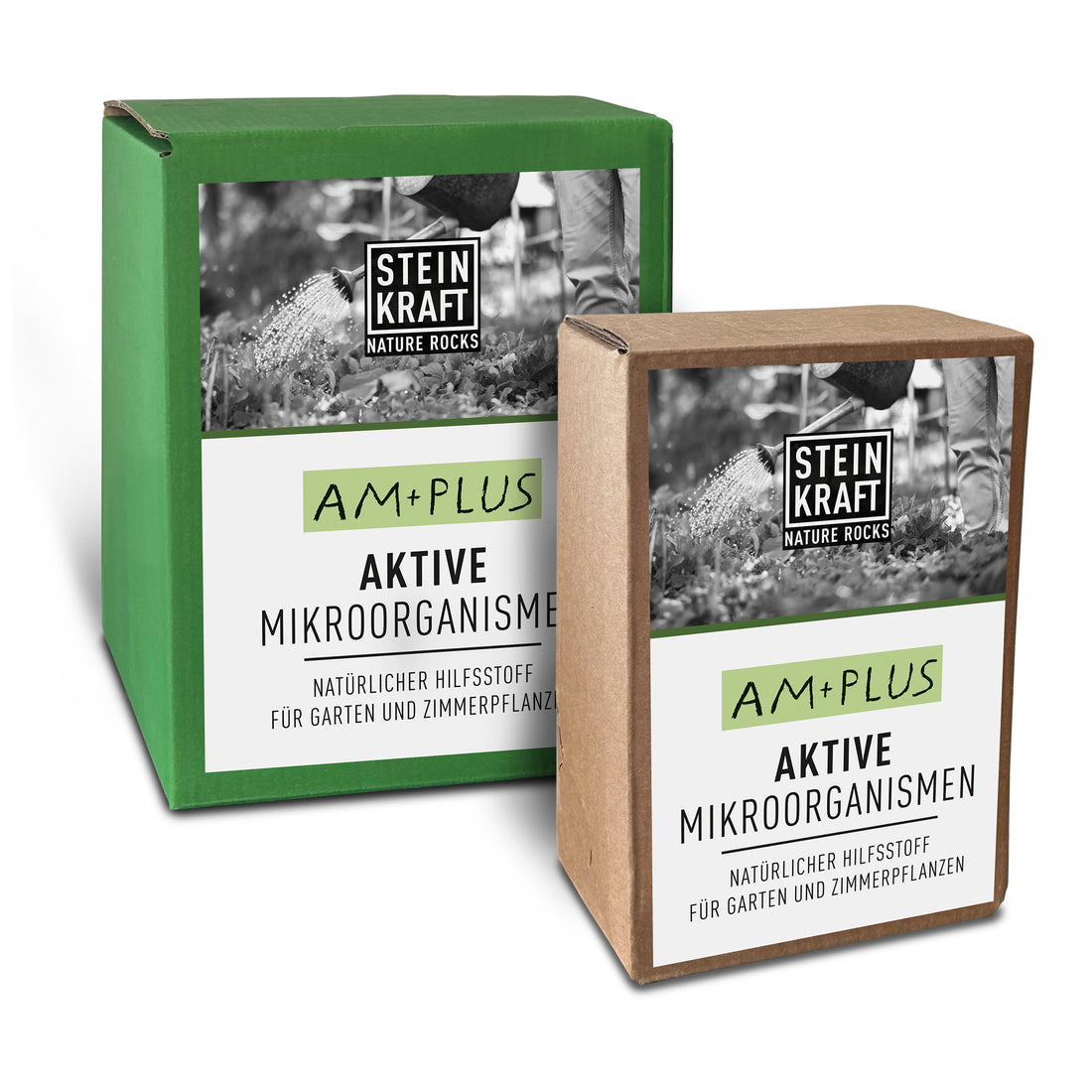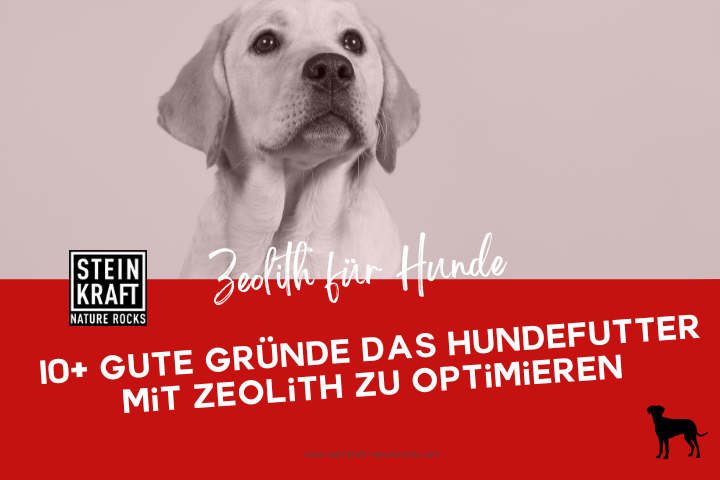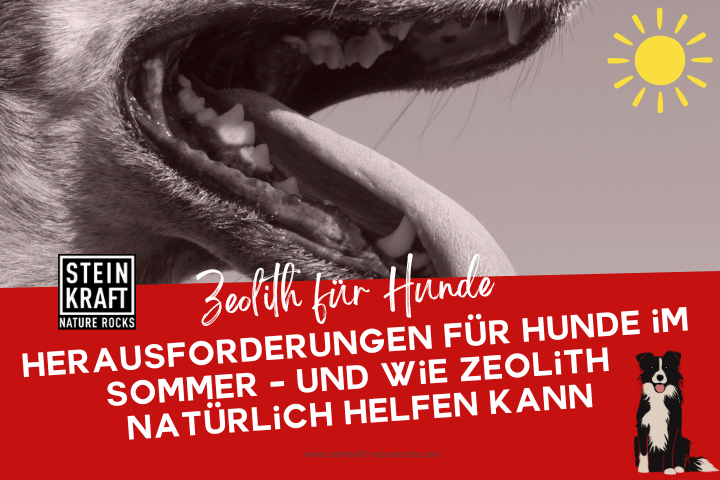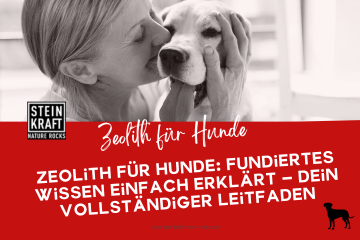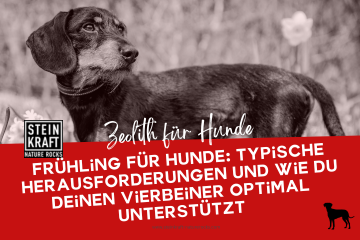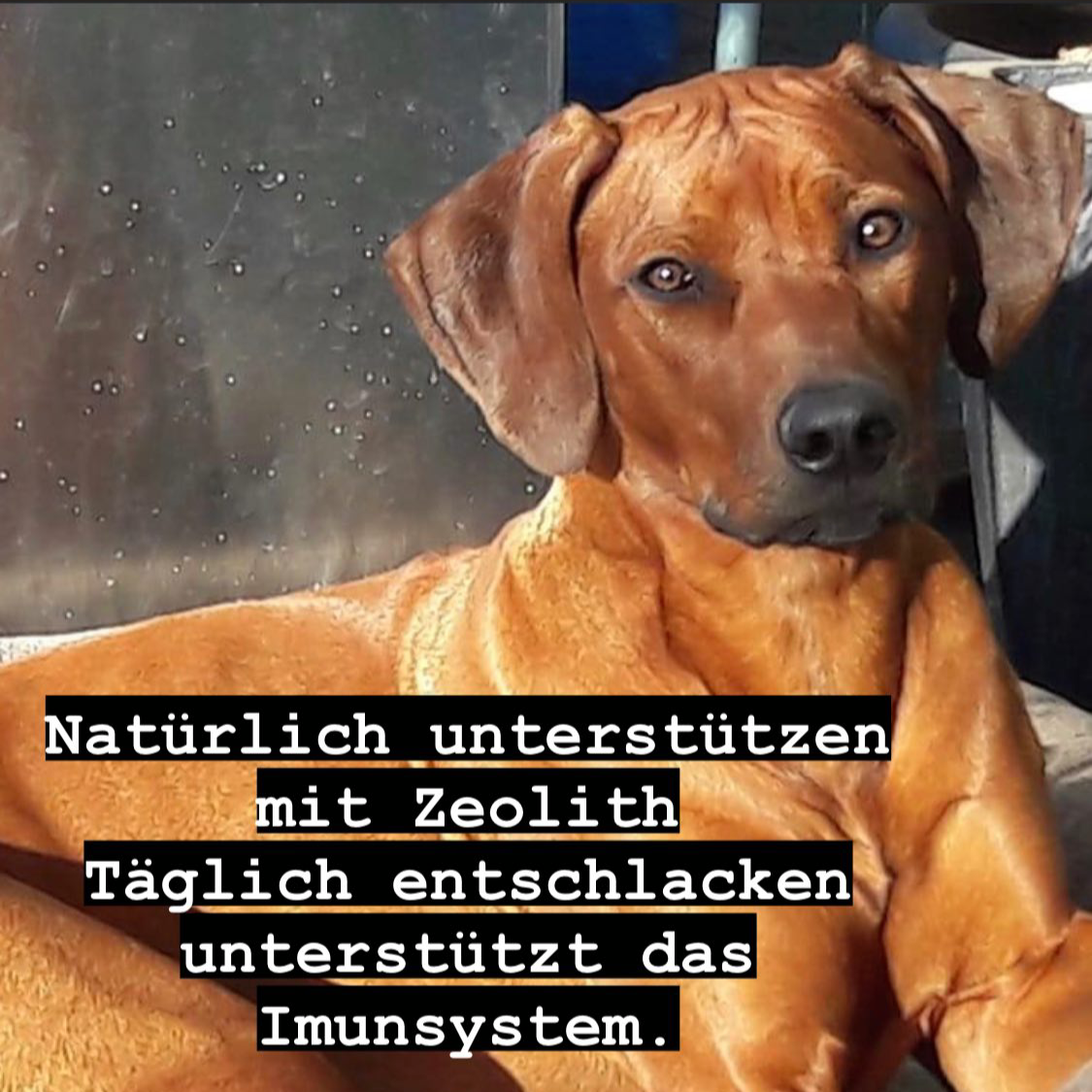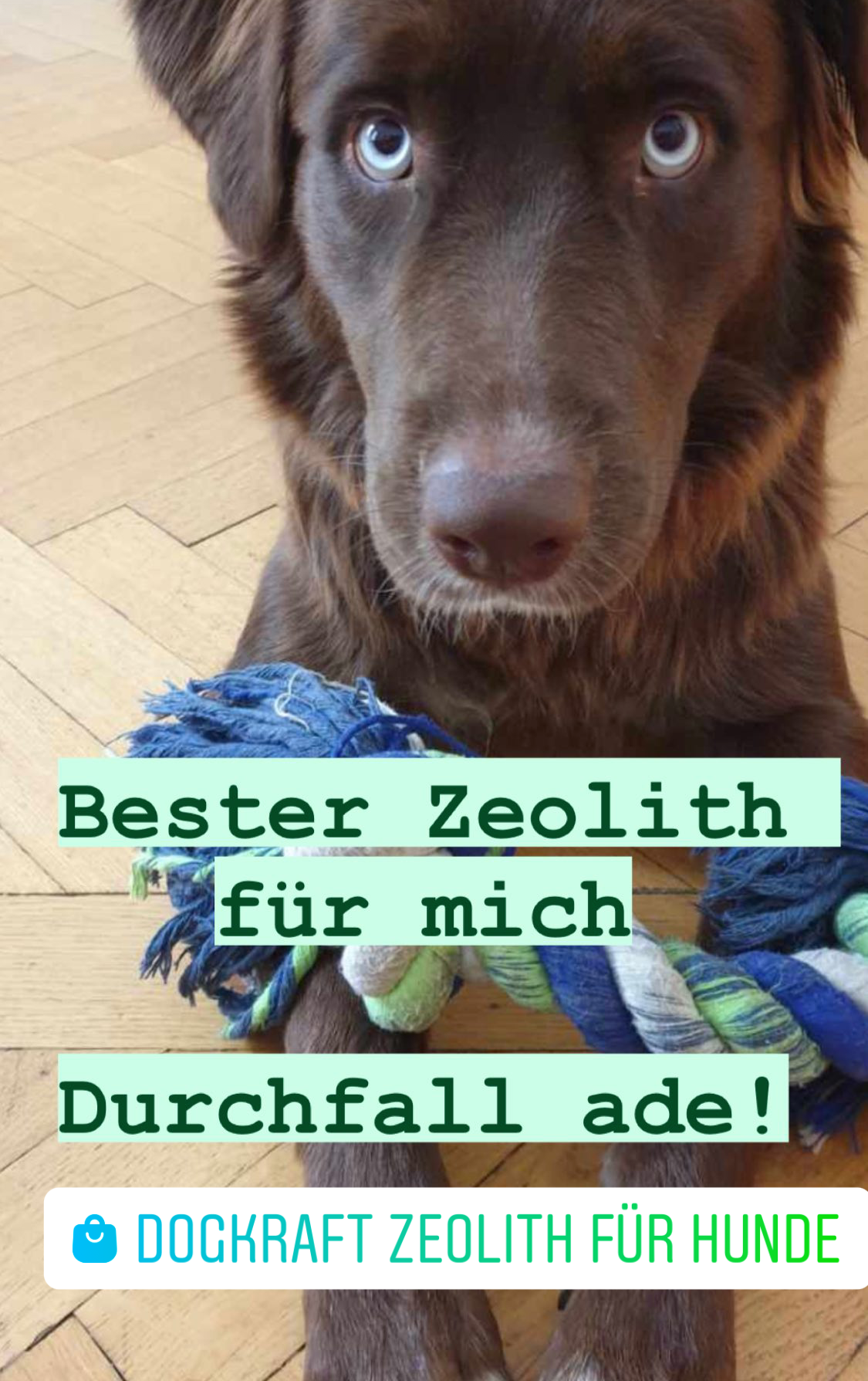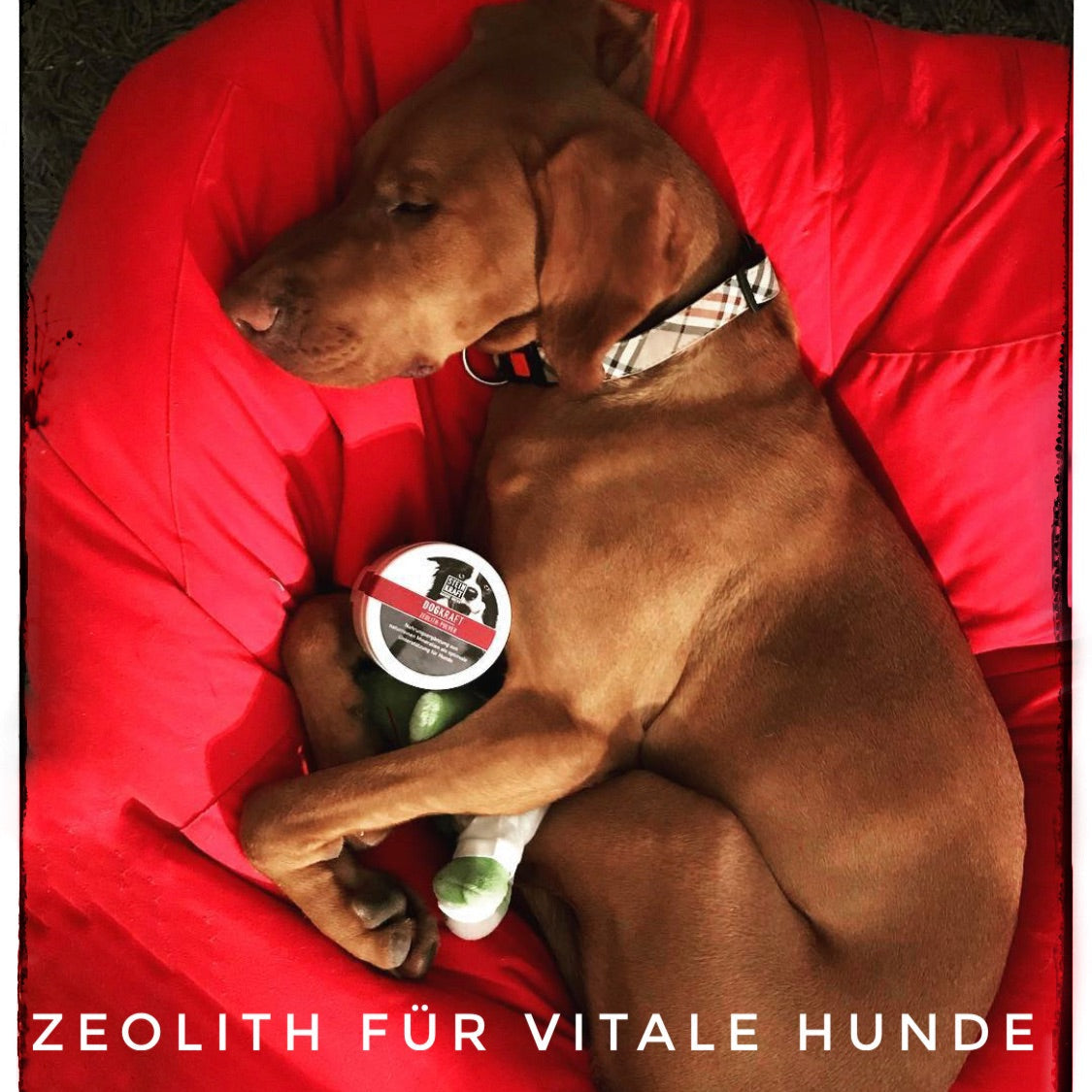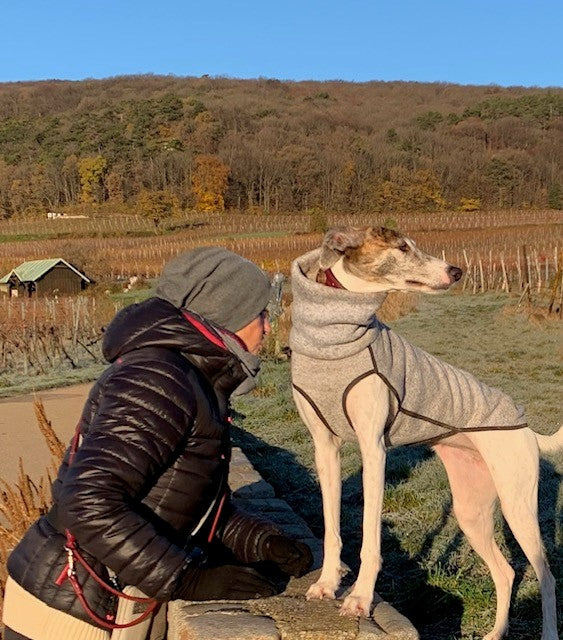Summer vacation with your dog - should be a joy for everyone
A summer vacation with your beloved four-legged friend can be a lot of fun, but the hot months also present special challenges for dogs. High temperatures, dry air, and intense sunlight put a strain on a dog's body and can lead to poor circulation, dehydration, sunburn, or even heatstroke. In addition, long journeys—for example, by car—and the unfamiliar surroundings at the vacation destination are stressful for many dogs. Below you'll find a clear guide to the most important summer hazards and practical tips on how to ensure your dog has a pleasant and safe summer vacation.
Climatic stresses in summer
Dogs tolerate heat much worse than humans. Their comfortable temperature is only around 14°C ambient temperature – what we perceive as warm can be stressful for dogs. In addition, dogs can hardly sweat (there are only a few glands on their paws); excess heat is released primarily through panting . In high temperatures and dry air, however, a lot of fluid is lost through the tongue, which quickly threatens dehydration if they don't drink enough. Intense sunlight also means high UV exposure : dogs with light or thin fur can suffer sunburn on hairless areas (typically the surface of the nose, edges of the ears, and stomach). Short-snouted breeds (brachycephalic dogs such as pugs or bulldogs) as well as very young or old animals are particularly vulnerable to heat – their shortened airways and possibly reduced cardiovascular reservoir make cooling more difficult, so they overheat more quickly.
Typical travel situations and stress factors
-
Long car journeys: In the summer heat, a car journey can be torture. Temperatures rise rapidly inside a closed car ( an outside temperature of just 20°C can reach approximately 46°C inside in just one hour !)
This means there's a high risk of overheating, even if the windows are slightly open. Drafts from fully open windows are also problematic – they can irritate the dog's eyes and respiratory system. Furthermore, long journeys often cause stress or nausea in dogs. Tip: Regular breaks, water options, and good ventilation (see below) are essential to making car journeys in hot weather bearable. -
Unfamiliar surroundings: Dogs are creatures of habit; a new place with unfamiliar smells, different accommodations, and a lack of familiar routine often means stress. Some four-legged friends react during the first few days of vacation with nervousness, loss of appetite, or gastrointestinal problems . The dog must first get used to the new environment and understand that their caregivers are still with them.
-
Noise and hustle and bustle: Popular vacation destinations are often associated with increased noise and crowds – e.g., traffic noise, loud music, fireworks, or a general hustle and bustle. Dogs have more sensitive hearing than we do; unfamiliar loud noises can trigger fear and anxiety. Crowds are also overwhelming for many dogs. Without the opportunity to retreat and rest periods, such hustle and bustle can lead to considerable stress.
-
Encountering other animals: In new surroundings, your dog may encounter other dogs (such as other holiday dogs in the accommodation or on the beach) and wild animals . Not every dog gets along with other dogs right away – friction or dominance fights can arise, especially if everyone is on a leash in a small space. Depending on the country you are visiting, there may also be stray dogs or cats that transmit diseases or parasites. In addition, there is an increased risk of insect bites (e.g., bees, wasps) and parasites such as ticks or mosquitoes in summer. All of this requires attention from the owner to avoid conflicts or health problems.
Health risks for dogs in the summer heat
-
Heatstroke (overheating): Extreme overheating of the body can lead to heatstroke in dogs – a life-threatening condition . Signs include intense panting (rapid, shallow breathing, possibly with excessive salivation), restlessness, a very red tongue and mucous membranes, and disturbed behavior (lethargy, unsteady gait). In severe cases , vomiting, diarrhea, seizures , or unconsciousness may occur. Without rapid cooling and medical attention, heatstroke can quickly lead to organ failure and death.
-
Circulatory problems: Even before heatstroke occurs, the circulatory system is often severely strained in extreme heat. Persistent heat causes blood vessels to dilate, blood pressure to drop – the dog appears weak, pants heavily, lies down frequently, and in the worst case, can collapse. Older dogs or those with heart disease are particularly prone to circulatory problems in high temperatures. Early warning signs should be taken seriously to prevent heatstroke from occurring in the first place.
-
Dehydration (lack of fluids): On hot days, dogs need significantly more water. Panting constantly evaporates fluids – the more the dog pants, the more water it loses . If the dog doesn't drink enough, dehydration is a risk: It becomes lethargic, has dry/leathery mucous membranes, and possibly sunken eyes; the skin tissue loses elasticity. In extreme cases, dehydration can lead to circulatory failure and kidney damage.
-
Sunburn: Dogs can also get painful sunburn . Areas of the body with little or no hair are particularly at risk—such as the tip of the nose, ears (inside and outside), and the hairless belly. Acute sunburn is characterized by redness, scaling, or crusting of the skin; more severe burns may even result in blisters. Sunburn causes itching and burning, causing the dog to lick or scratch the affected area. Repeated sunburns damage the skin and should be avoided at all costs.
-
Burnt paw pads: In summer there is a significant risk of paw burns because many surfaces heat up extremely hot . Dark asphalt, sand or rock can reach temperatures of well over 50°C in direct sunlight (even an air temperature of 25°C means around 52°C on asphalt !). The first burns on the paw pads appear at surface temperatures of around 45°C. Such injuries are extremely painful for the dog: It becomes restless, constantly lifts its paws, begins to limp and licks the pads. The skin on the paws can become red, swollen and blisters ; in severe cases the horn chars and peels off, which can lead to infection.
Preventive measures and tips for a dog-friendly summer holiday
By planning ahead and taking a few simple steps, you can prevent many problems and make your dog's summer travel easier. Here are some practical tips to ensure your four-legged friend's safety and well-being:
-
Don't leave dogs in hot cars: Never leave your dog alone in a parked car! Even relatively mild outside temperatures can quickly turn a car into a dangerous heat chamber . Even in the shade and with a slightly open window, the interior temperature rises rapidly. Dogs cannot tolerate this heat – there is an acute risk of death from overheating. Therefore, never leave your dog in the car in summer, not even for a few minutes (e.g., while shopping). If in doubt, take the dog with you or leave it with someone in the shade.
-
Plan car journeys carefully: Avoid long journeys in the midday heat . When traveling by car, take a break at least every 2–3 hours to allow your dog to relieve itself, exercise, and cool down. Keep the temperature inside the car moderate – ideally with air conditioning, but no more than about 10°C cooler than outside to avoid putting strain on the dog's circulation.
Important: Avoid direct drafts toward your dog (only open windows slightly, and avoid directing air conditioning toward your dog), as wind can cause eye infections and colds. Offer your dog water regularly while traveling (see next point). -
Let your dog drink enough: Ensure your dog always has access to fresh water – in the car as well as on vacation. Especially in warm weather, you should actively encourage your four-legged friend to drink , as dogs often don't drink enough on their own. Refill the bowl more often, distribute several bowls in different locations if necessary, or use a water bottle while traveling. When panting, dogs lose a lot of fluid, and this loss must be continually replaced.
Caution: Change standing water in the bowl daily in hot weather, as germs can multiply quickly.
-
Take advantage of cool times and shady spots: Plan walks during the cooler hours of the day—ideally early in the morning or late in the evening. Avoid activities in the blazing midday sun. If possible, choose shady paths (e.g., in a forest or park) rather than unprotected routes in the sun. Strenuous activities such as running alongside a bike or rough ball games should be avoided in extreme heat to avoid overtaxing your dog's circulatory system.
-
Provide cooling: Your dog should always have the opportunity to retreat and cool off in hot weather. Shady spots are essential - whether under trees, under a parasol, or in a beach tent, it is important to have a place where the dog can escape the direct sun. At home or in your vacation rental, you can provide a cooling mat or a damp towel for your dog to lie on to cool off. Many dogs also enjoy water to cool off : let your four-legged friend take a dip in the lake or sea (at permitted dog beaches), or provide them with a paddling pool in the garden. Playing with the lawn sprinkler or taking a gentle shower can also provide relief on hot days.
Caution: After swimming in the sea, the dog should be rinsed with clean water to remove salt and sand from the coat (salt water can irritate the skin and stomach). -
Protect paws: Think about your dog's paws . In summer, test the surface before walking your dog on it for any length of time: Feel the asphalt or sand with the back of your hand for 7 seconds to see if it's uncomfortably hot - if it's too hot for your hand, it's dangerous for your dog's paws too. Avoid asphalt surfaces during hot weather if possible; opt for grass, earth, or shady paths instead. If you do have to walk on hot ground, put protective shoes on your dog or carry him for short distances. Special paw wax ointments can also offer a certain degree of heat protection. As a general rule, the risk of paw burns is lowest in the cool morning and evening hours.
-
Use sunscreen: Protect your dog from sunburn. Stay in the shade with your dog as much as possible and avoid prolonged exposure to direct sunlight. For sensitive dogs (with light or thin fur), it's worth applying sunscreen to exposed areas of the body—such as the nose, unpigmented ears, or belly. Use only sunscreen suitable for pets or babies (SPF 30-50) without fragrances or harmful substances, as dogs will lick residue off their skin. In a pinch, thin protective clothing with UV protection can be used (e.g., a light T-shirt for dogs), but there's a risk of heat buildup underneath, so it's better to use sunscreen and shade.
-
Maintain familiarity and routine: Stick to familiar routines as much as possible to give your dog security. Feed him familiar food at the usual times—even if he eats little the first day because of excitement, routine helps with the adjustment. Bring familiar items from home: His own basket or favorite blanket will create a familiar retreat in your vacation home.
You should also pack the dog's usual drinking bowl and place it in a designated spot in the accommodation on the day of arrival. This way, your dog immediately has something familiar (his water bowl) and knows where to drink. Familiar smells and rituals (eating, sleeping) provide security in unfamiliar surroundings. -
Settling in at your vacation destination: Give your dog time to get to know the new surroundings calmly. Upon arrival, take him for a short walk on a leash so he can relieve himself and explore the unfamiliar smells. Then let him sniff around the vacation apartment or hotel room— on the leash and little by little, so he doesn't rush into unfamiliar corners. Show him where his place and bowl are. For the first few days, your dog should be kept mostly on a leash outside, as unfamiliar surroundings also harbor unknown dangers (e.g., unsafe roads, poison bait, steep cliffs, depending on the location).
Contact with other dogs at your holiday destination should be cautious: Let the animals sniff each other, but don't force anything. If there are many dogs in a small space (for example, in a dog-friendly complex), keep your distance at first and see how your dog reacts. Over time, once your dog has gotten used to it, it will be able to play more relaxed with other dogs . Reduce stress and noise: Make sure you avoid overtaxing your dog. Plan enough rest breaks for your dog to snooze or retreat from the hustle and bustle. Ideally, your dog should have a quiet place to retreat to (e.g., its own room or a corner with its blanket) where it can go if necessary. Avoid taking your dog to very loud events – fireworks or a concert would unnecessarily frighten it. If loud events are unavoidable, keep your dog safe: Stay with it if possible, close windows and curtains, and perhaps play some soft music to reduce the noise. In an emergency, sedatives recommended by your veterinarian can help if your dog is extremely sensitive to noise. -
Take precautions: Prepare a first-aid kit for your dog. Always have essential first-aid supplies handy while on vacation—e.g., disinfectant, bandages, tweezers (for ticks/thorns), etc. This way, minor injuries (a cut on the paw from shells or broken glass on the beach, a tick bite, an insect sting) can be treated immediately. Also, bring enough of any medication your dog might need.
Before traveling, it's a good idea to check with your veterinarian: Are your pet's vaccinations up to date? Additional vaccinations or treatments may be required for trips abroad (such as rabies vaccinations and medications for parasites like heartworms in southern countries). Also discuss parasite prevention : effective tick protection is important in summer, as are sandfly medications (risk of leishmaniasis in Mediterranean regions) and flea protection.
Finally, don't forget to identify your dog—ideally, always wear a collar with your cell phone number and be microchipped. In unfamiliar areas, it's also advisable to keep your dog on a leash or only let him off the leash in securely fenced areas to prevent him from getting lost.
Conclusion: With caution and good preparation, you can make your summer vacation dog-friendly . Pay attention to your dog's signals, avoid heat stress and sources of danger – then your two-legged and four-legged friends can relax and enjoy the most wonderful time of the year together!
Sources: The tips and advice in this guide are based on expert recommendations from veterinarians and animal welfare organizations ( Dogs and heat: How four-legged friends get through the summer well | NDR.de - Guide - Consumer ) ( Heat: Look after your dog! ) ( Taking your dog in the car on summer vacation: What you need to bear in mind - BeDogi - EXCLUSIVE CONTENT ) ( 7 tips to make it easier for your dog to arrive at your vacation destination ) as well as on current guides on the subject of dogs and heat ( Cooling dogs down in the summer: The 10 best tips ) ( Sunburn in dogs: prevent, recognize and treat | VETO - We move animal welfare ).
🐾✨ Checklist: Holiday with dog – relaxed & well prepared
A loving contribution to lightness for you and your four-legged friend
✅ Before your vacation – what shouldn’t be missing?
🔲 First aid kit for dogs
→ Zeolite (e.g. for diarrhea), tick tweezers, bandages, disinfectant, medication if necessary
🔲 Sufficient water & travel snacks
→ Drinking bottle, bowl, easily digestible food, favorite treats, in our case carrots
🔲 Pack usual food & bowls
→ Familiar food provides calm for the stomach – especially for sensitive dogs
🔲 Favorite blanket or basket
→ The familiar scent provides security in new surroundings
🔲 Safety harness & leash
→ For on the go, hikes or new places with many attractions
🔲 Sun protection & shady spot
→ For sensitive noses, ears and light-colored stomach areas – zeolite paste or dog-friendly sunscreen
🔲 Vaccination certificate & travel documents
→ EU pet passport, microchip number, address & contact details
🔲 Don’t forget to care for your paws!
→ Test the soil (back of the hand test), if necessary take paw ointment or zeolite paste with you
🔲 Toys & Activities
→ To make quiet times enjoyable – e.g., chew toys or search games
🔲 Share peace & anticipation
→ Your dog senses your mood – stay calm, then he will travel with you with joy 💛
🌿 Extra tip for detoxification & stomach calm:
Take zeolite with you – as natural support during a change in diet, travel diarrhea, or heat stress.





















